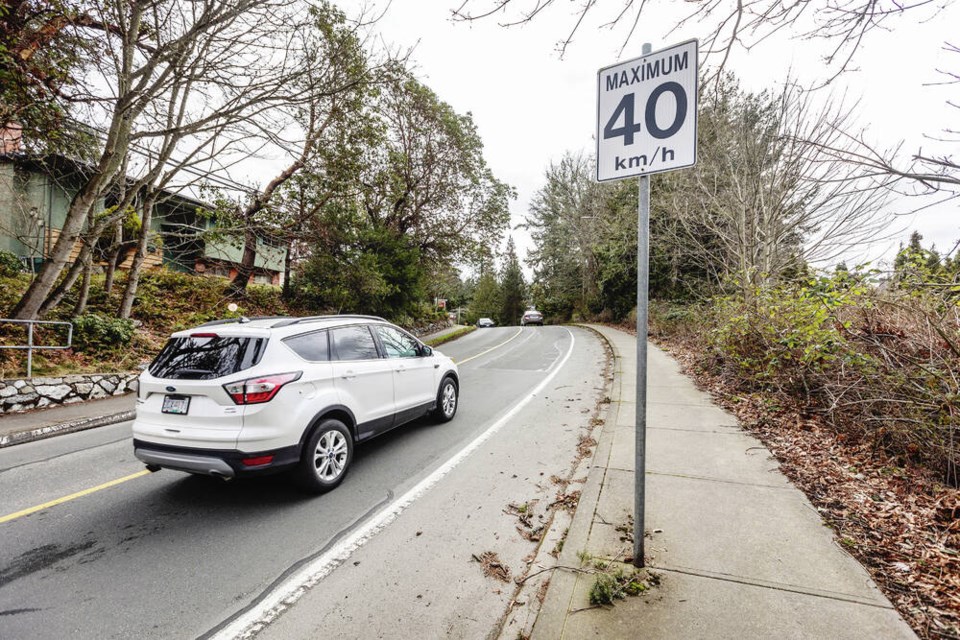Lower speed limits will be in effect this spring in Saanich, after council voted unanimously to reduce limits on nine traffic corridors.
District staff will start implementing a program to reduce speeds to between 25 km/h and 40 km/h and install new signs in April, beginning with rural areas. The district expects to complete the first phase by the fall.
First to be targeted are nine of what Saanich calls Type B streets — those with a continuous yellow centre line.
At the top of the list are Sayward Road to Cadboro Bay Road, Cedar Hill Cross Road, Harriet Road from Gorge Road West to McKenzie Avenue, Tillicum Road, Gorge Road West, Prospect Lake Road, Old West Saanich Road and Oldfield Road, West Saanich Road and Emily Carr Drive.
The biggest change would be on Saanich’s seaside route, along Cordova Bay, Ash Road and Cadboro Bay Road, with the limit dropping to 40 km/h. The limit is already 40 km/h on the Cordova Bay Road stretch of that route.
Gorge Road West, Tillicum Road, Saanich Road and Cedar Hill Cross Road will also have their speed limits reduced to 40 km/h.
The limit will drop to 30 km/h on the north end of Prospect Lake Road, while its south end will be reduced to 40 km/h, and the limit will be set at 40 km/h for both Old West Saanich Road and Oldfield Road.
It will be 25 km/h on the summit road of PKOLS/Mount Douglas Park.
According to Saanich staff, when those corridors have been dealt with, staff will come back to council to get approval to tackle the next set of priorities, which will include residential and neighbourhood roads.
The initiative was inspired by Vision Zero, adopted in Sweden in 1997, which aims to reach zero road fatalities through better road design, speed reduction and other measures.
A city report said slower speeds contribute to improved comfort for pedestrians and cyclists, less noise and less severe outcomes when collisions occur.
Collisions with vulnerable road users at 30 km/h or less correlate with a 10 per cent probability of death, compared with a 30 per cent probability of death at 40 km/h or 85 per cent at 50 km/h.
Municipal councils have the authority to set speed limits on roads under their jurisdiction.
The default speed limit for municipal streets in B.C. is 50 km/h. Saanich is recommending the default speed be set at 30 km/h for Type A streets — those without a continuous yellow centre line or those where a bikeway exists or is proposed.
Speed limits on Type A streets are expected to be tackled later this year.
The Type A portion of the speed-reduction plan is a bigger project, with as many as 5,500 new speed-zone signs needed due to the number of residential streets involved. An early budget estimate suggests it could cost $5.6 million.
Saanich’s program follows the City of Victoria’s initiative launched last year that has staff starting to erect new speed-limit signs on side streets.
Victoria has a new default speed limit of 30 km/h on neighbourhood roads.
The city will start by extending to a full day the 30 km/h zone around some schools and parks.
The new default limit won’t apply to arterial streets such as Bay, Blanshard, Cook and Douglas, or secondary arterial streets such as parts of Dallas Road, Finlayson Street, Government Street and Fort Street, or collector streets such as Belleville Street, Caledonia Avenue, Foul Bay Road and Menzies Street.
>>> To comment on this article, write a letter to the editor: [email protected]



